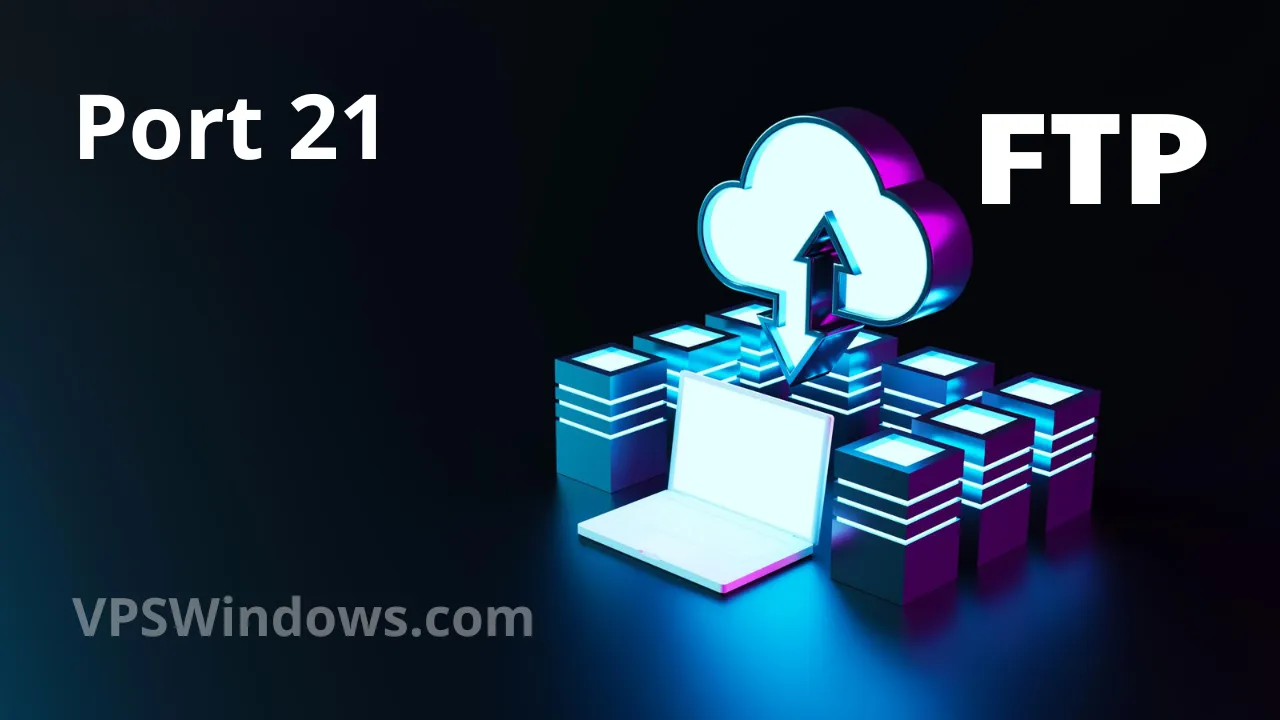What is Port 21?
Port 21, a term that is often quite unfamiliar to many people, plays a very important role in the field of information technology, especially in data transmission. Did you know that this port is the main key to connecting and transferring files over the Internet? It seems simple, but port 21 is the ” symphony ” connecting the client and the server , in which each note is a command on how to communicate between them. Let’s learn more about port 21 and its indispensable role in the FTP (File Transfer Protocol) protocol !
Port 21 and FTP protocol
Port 21 is the port set up to serve the FTP protocol, one of the most popular file transfer protocols worldwide. When users need to transfer data from their computer to a remote server, this port will open to help control commands be sent and received over the network. It can be said that port 21 plays the role of a central location in establishing and maintaining connections between devices. The FTP protocol operates on two main ports, port 20 and port 21; in which, port 21 serves for control, port 20 is dedicated to data transmission.

The role of port 21 in file transfer
Port 21 plays an essential role in file transfer, helping to establish a connection between the client and the server . It is well known that storing and sharing data has become an integral part of work and daily life. Here are some of the responsibilities and roles of port 21 in this process:
- Establishing Control Connection : Port 21 is the main control port, which starts each communication session. When a user enters a login name and password, this port opens to confirm access.
- Send and Receive Command Processing : Once the connection is established, all commands like upload, download are sent through port 21. This helps the server and client to communicate with each other efficiently.
- Provide Server Feedback : Every time the client sends a command, the server responds via the same port 21. This feedback can be the result of a command or an error message, helping the user better understand the status of the performed tasks.
- Reduced Communication Errors : By standardizing the transport protocol over port 21, the possibility of errors in communication between systems is significantly reduced.
- Access Decentralization Support : Port 21 allows administrators to set different access rights for different users, which is important in large organizations.
With the important roles above, port 21 is truly an indispensable part of the FTP system, helping file transfer become faster and more efficient.
How port 21 works in network
In the network system, port 21 plays an extremely important role in processing and transmitting data through the FTP protocol. However, not everyone understands how port 21 works in the network. Next, we will learn about the basic process of using this port.
Steps to connect using port 21
The steps to connect via port 21 can be described intuitively and easily as follows:
- Initiating Connection : When a user wants to transfer a file, the FTP Client application opens a random port and sends a connection request to port 21 of the FTP Server.
- Server Response : When the server receives the request, it responds with a SYN/ACK (synchronize/acknowledge) packet to the port the client opened.
- Connection Confirmation : The client receives a response from the server and sends an ACK (acknowledge) packet back to confirm that the connection has been successfully established.
- Data Transmission : After the connection via port 21 is established, the client can send a command to upload or download a file. The data will be transmitted via port 20, which reduces the load on the control port and optimizes the transmission process.
- Ending the Session : When the tasks are complete, the session can be closed by sending the end command from the client, and port 21 will be freed up to be ready for new connections.
By working in this way, port 21 not only facilitates data transfer but also ensures that this process takes place efficiently and securely.
Need a powerful VPS to host FTP data? Check out our dedicated VPS package that supports FTP with high bandwidth and optimal security.
Benefits of using port 21
Using port 21 not only helps maintain the connection between client and server but also brings many practical benefits to users and organizations. Below are some of the benefits that port 21 brings in data transmission:
Optimize data sharing process
Port 21 helps optimize data sharing in several ways:
- Easy and Fast : Users can easily upload and download files from the server without any complicated software. This saves time and improves work efficiency.
- Information Security : Although FTP has security disadvantages, configuring and protecting port 21 can help improve the security of data during transfer.
- Management and Organization : Using port 21 allows users to manage and organize files efficiently, especially when dealing with large files.
- Low Cost : Using port 21 allows organizations to perform data transfers over the network without making large investments in specialized software or hardware.
- Multi-Platform Support : Port 21 supports data transmission from multiple devices, allowing for simple information sharing across multiple platforms.
With these benefits, there is no reason not to use port 21 if you need a reliable solution for data sharing and management.

Why is port 21 vulnerable?
Now that you understand the benefits of port 21, it is important to note that it also has some limitations, especially when it comes to security. Port 21 is a popular target for cyber attacks for the following reasons:

Security vulnerabilities related to port 21
Port 21 is vulnerable to attacks due to a number of factors, including lack of encryption and several other issues. Specifically, the security vulnerabilities related to port 21 can be listed as follows:
- Lack of Encryption : FTP does not encrypt information, which means that anyone can eavesdrop on information such as login names and passwords, leading to the risk of Man-in-the-Middle (MITM) attacks.
- Exploiting Plain FTP Disadvantages : Plain FTP protocol does not require SSL certificates, making remote attacks easier, such as cracking login credentials.
- Open Ports That Need Protection : FTP requires opening many ports to establish a data channel, which can become a vulnerability if these ports are not securely configured.
- Configuration Weaknesses : Many system administrators may not configure FTP properly, resulting in access rights not being properly protected.
- Importance of Updates : Lack of FTP software updates can leave security holes open for easier attacks.
Therefore, managing and protecting port 21 is a matter of concern to prevent possible attacks in untrusted network environments.
Replace port 21 with other methods
The disadvantages of port 21 have led many people to look for more secure alternatives for data transmission. The use of secure protocols such as FTPS, FTPES, and SFTP has become increasingly popular.
Compare port 21 with other ports in FTP protocol
When learning about alternative protocols, it’s important to know the difference between port 21 and other ports, especially when it comes to security. Here’s a comparison table of some common ports:
| Gate | Protocol name | Describe |
|---|---|---|
| Port 21 | FTP (File Transfer Protocol) | Default port for control commands, unencrypted. |
| Port 20 | FTP Data | Port for data transmission, unencrypted. |
| Port 22 | SFTP | SFTP connects over SSH, encrypting all information. |
| Port 990 | FTPS | Port for FTPS, encrypted connection, more secure than FTP. |
| Port 21 | FTPES | Similar to FTPS but requires security setup before transferring files. |
From the table above, it is clear to see the difference between port 21 and other ports. The lack of encryption on port 21 creates a major security risk, while ports like SFTP or FTPS ensure the security of data transmission.
Frequently Asked Questions (FAQs)
- Is Port 21 used in any other protocol?
- No, port 21 is primarily used for FTP.
- Is it safe to use port 21?
- Port 21 does not encrypt information and is therefore vulnerable to attack. You should use alternative methods such as FTPS or SFTP.
- Can I configure security for port 21?
- Yes, you can take some security measures like limiting access and using a firewall to protect this port.
- How many ports are used in FTP protocol?
- The FTP protocol uses mainly two ports: port 21 for control and port 20 for data.
- Is there any way to check if port 21 is open?
- You can use an online port checker or the command line to verify the status of port 21.
Points to remember
- Port 21 is the main port for the FTP protocol and executes control commands.
- Port 20 is used for actual data transmission.
- Port 21 is vulnerable due to lack of encryption.
- Alternative methods like SFTP and FTPS provide better security.
- Make sure port 21 is secured and configured correctly to minimize risk.
Conclude
Understandably, port 21 holds a very important position in the FTP protocol, acting as the main communication port between the client and the server. Although it brings many benefits to data transmission, port 21 also contains many security risks that users need to be aware of. In the context of increasing information transmission and increasing security needs, switching to more secure methods such as FTPS or SFTP is essential. Hopefully this article has provided you with a clearer and deeper look at port 21 and its related aspects!










